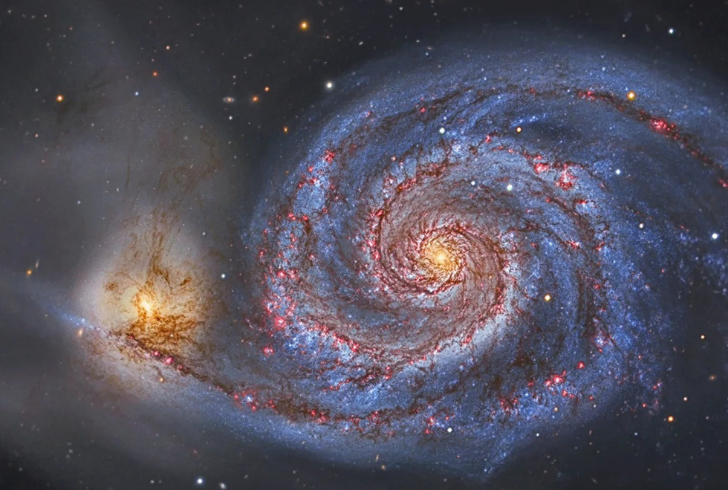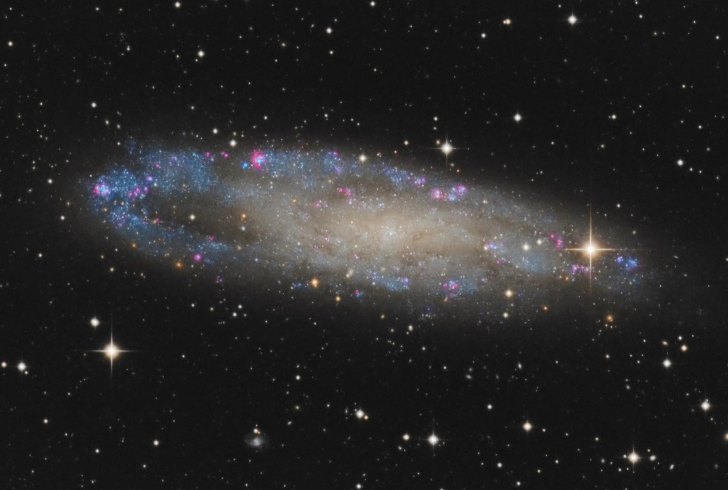The Big Bang Theory offers the most compelling explanation for the origins and evolution of our Universe. This theory, grounded in observable data, suggests that the Universe began from an incredibly hot and dense state and has been expanding ever since. Let's explore the key pieces of Big Bang Theory evidence that support this remarkable narrative.
1. Redshift of Galaxies
One of the most striking pieces of evidence for the Big Bang Theory is the redshift observed in the light from distant galaxies. As light travels through space, its wavelength stretches, shifting toward the red end of the spectrum. This phenomenon occurs because galaxies are moving away from us. The further a galaxy is, the faster it appears to be receding. This redshift indicates that the Universe is expanding.

Instagram | astronomy.magazine | A key piece of evidence for the Big Bang Theory is the redshift in light from distant galaxies.
If we trace this expansion backward, it suggests that all galaxies were once clustered in a very small, dense region. This observation aligns perfectly with the Big Bang Theory, which posits that the Universe began from a singular, compact point.
2. Cosmic Microwave Background
Another pivotal piece of Big Bang Theory evidence is the Cosmic Microwave Background (CMB). Shortly after the Big Bang, the Universe was extremely hot. As it expanded, it cooled down, leaving behind a faint glow of thermal radiation. This radiation fills the Universe and can be detected as microwave light.
The CMB was first discovered in 1965 by Arno Penzias and Robert Wilson, and it has since been mapped with great precision by satellites like WMAP and Planck. The uniformity and specific characteristics of the CMB are consistent with what the Big Bang Theory predicts, providing strong support for the theory.
3. Elemental Composition
The distribution of chemical elements in the Universe offers additional Big Bang Theory evidence. According to the theory, only the lightest elements—primarily hydrogen and helium—were formed in the first few minutes after the Big Bang. The quantities of these elements predicted by the Big Bang Theory match those observed in the oldest stars and galaxies.
For instance, very old stars, which formed shortly after the Big Bang, show a high ratio of hydrogen and helium compared to heavier elements like carbon and oxygen. This supports the theory's predictions about the primordial nucleosynthesis, where the lightest elements were created.
4. Observing the Past

Instagram | goodastronomy | Light from distant galaxies takes billions of years to reach us, letting astronomers view them as they were in the past.
The concept of looking back in time is integral to understanding the Big Bang Theory evidence. Light from distant galaxies takes billions of years to reach us, allowing astronomers to observe these galaxies as they were in the past. Observations reveal that ancient galaxies were significantly different from the ones we see today.
This progressive change supports the idea that the Universe has evolved over time, a key prediction of the Big Bang Theory. In contrast, the Steady State Theory, which posits that the Universe remains largely unchanged, does not align with these observations. The dynamic changes observed in distant galaxies fit more naturally with the Big Bang model.
The Big Picture
The Big Bang Theory evidence comes from various independent observations that collectively paint a coherent picture of the Universe's history. From the redshift of galaxies to the Cosmic Microwave Background, the evidence strongly supports the theory's explanation of the Universe's origin and evolution.
Understanding these elements not only sheds light on our cosmic past but also highlights the remarkable journey of scientific discovery that continues to expand our knowledge of the Universe.




